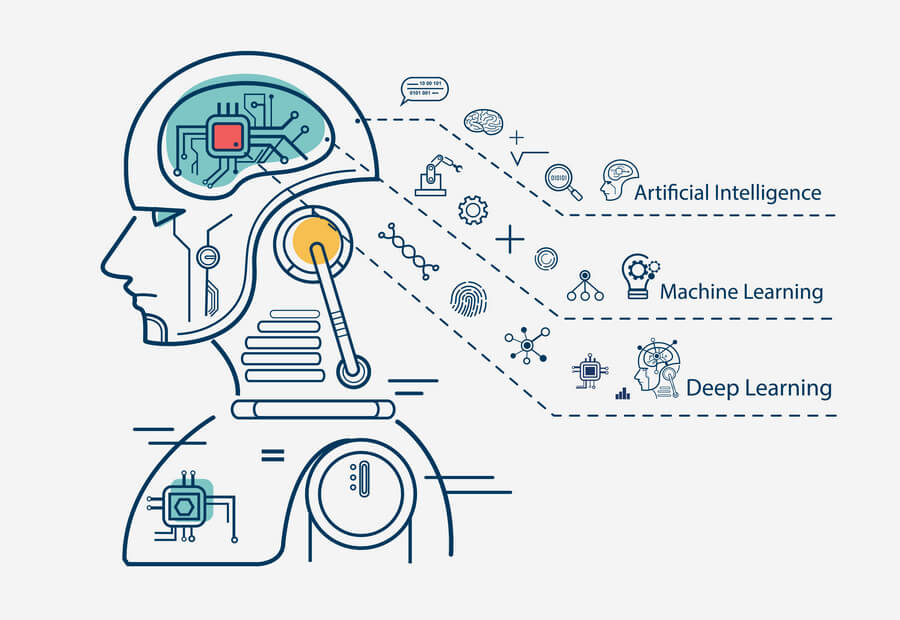Imagine a banking experience that’s so seamless and intuitive that it feels almost effortless. A digital realm where you can easily navigate complex financial processes and access the tools you need to manage your finances faster and easier. This is the kind of experience that customers crave, and banks that can provide it are the ones that stand out from the competition.
Here are the latest technologies that banks and other financial service companies are investing in right now to increase attrition, acquisition and revenue:
Open Banking
Open banking is a financial services practice that allows third-party providers to access financial information from banks and other financial institutions with the consent of their customers. Open banking uses Application Programming Interfaces (APIs), which provide secure access to customer data.

Open banking creates an ecosystem of financial services where customers can share their data with other providers, such as fintech companies, that can then use this data to provide more sophisticated products and services. This includes budgeting apps, investment tools, and loan platforms.
Open banking is intended to increase competition and innovation in the financial services industry, giving customers more choices and flexibility in managing their finances. It also promotes transparency and encourages banks to provide better services and more competitive pricing.
Good news! 90% of customers are willing to share behavior data with companies for better service.
Real-Time payment Rails, RTR
Real-Time Payment Rails (RTR) is a payment system that allows the instantaneous transfer of funds from one bank account to another in real-time, 24/7/365. With RTR, funds are transferred almost immediately, and the recipient can use the money without any delay.
RTR is built on top of existing payment infrastructure and operates through a centralized clearinghouse or network that connects all participating banks and financial institutions. The system uses modern APIs and cloud computing to facilitate fast and secure payments.
RTR offers many benefits, including improved cash flow management, faster settlement times, reduced fraud, and increased customer satisfaction. It also enables businesses to provide more flexible payment options to their customers, such as real-time refunds and instant disbursements.
RTR has become increasingly popular in recent years, with many countries adopting or planning to adopt real-time payment systems. For example, the Federal Reserve has launched the FedNow Service in the United States, which will provide instant payments to banks and other financial institutions.

Account to Account, A2A, Transactions
Account to Account transactions refer to transferring funds from one bank account to another, either within the same financial institution or between different financial institutions. A2A transactions are typically initiated through digital channels such as mobile banking apps, online banking portals, or payment platforms.
A2A transactions are becoming increasingly popular because they offer a convenient, fast, and secure way to transfer money between accounts. Unlike traditional payment methods such as checks or wire transfers, A2A transactions are typically processed in real-time, allowing for near-instantaneous funds transfers.
A2A transactions can be used for a wide range of purposes, including bill payments, peer-to-peer payments, and business-to-business transactions. Companies also use them to disburse payments to employees and suppliers and by governments to distribute benefits and refunds.
A2A transactions are made possible by technologies such as API integrations, which allow different banking systems to communicate securely, and by adopting open banking standards, which provide a framework for banks to share customer data and payment services.
R3 Technology
R3 is a distributed ledger technology (DLT) company offering a platform called Corda, specifically designed for the financial services industry. Corda is a blockchain that allows financial institutions to securely and efficiently transact with each other.
Banks and other financial institutions use R3 technology to streamline operations, reduce costs, and improve customer service. For example, financial institutions can create smart contracts with Corda that automate complex financial agreements, such as syndicated loans, trade finance, and securities trading.
Corda also provides privacy and security features essential for the financial services industry. It allows parties to transact directly with each other without intermediaries while ensuring that sensitive financial data is kept confidential.
R3’s technology is being adopted by a growing number of banks and financial institutions worldwide, including some of the largest banks in the US, Europe, and Asia. The technology is also being used by other industries, such as healthcare and supply chain management, to improve their operations and security.

Artificial Intelligence (AI) and Machine Learning (ML)
Artificial Intelligence (AI) and Machine Learning (ML) technologies are transforming the banking industry in many ways. Here are some examples:
- Fraud Detection: AI and ML can detect and prevent fraud by analyzing large volumes of transaction data and identifying patterns indicative of fraudulent activity.
- Customer Service: Chatbots and virtual assistants powered by AI and ML can handle routine customer inquiries and provide personalized support, freeing bank staff to focus on more complex tasks.
- Risk Management: AI and ML can analyze customer data and assess credit risk, allowing banks to make more accurate lending decisions and manage risk exposure.
- Personalization: AI and ML can examine customer data to understand their behavior and preferences, allowing banks to offer personalized products and services that meet their needs.
- Investment Management: AI and ML can study market trends and make real-time investment decisions, helping banks optimize their investment portfolios and manage risk more effectively.
- Compliance: AI and ML can help banks comply with complex regulations by automating compliance processes, identifying potential risks, and providing real-time alerts.
Overall, AI and ML technologies are helping banks to improve efficiency, reduce costs, and provide better customer experiences. Intelligent Automation (IA) on transformed operations and Robotic Process Automation (RPA) are indispensable for repetitive tasks automation. As these technologies evolve, they will become even more integral to the banking industry.
But how can smaller banks achieve such a high level of personalization and differentiation without losing the battle to bigger banks? Most industry experts agree that the first step is avoiding one-size-fits-all solutions. Next is to turn to professionals with industry-specific experience and expertise in the financial services and technology sectors and compliance.
At Sprinterra, we offer a hands-on approach to enable our clients in the financial services industry looking to reinvent their operations. By working with our team of experts, banks can differentiate themselves from the competition by providing a well-designed, intuitive, and personalized banking experience. Our team can help you increase efficiency, reduce errors, and exceed industry standards. Here are some digital solutions we can build for you and with you:
Customer service: Make it easier for your customers to quickly resolve service requests through intelligent automation
Lending: Streamline lending and reduce closing time for a more simplified digital customer experience
Bank operations: Automate middle and back office processes to boost efficiency
Onboarding: Create clear, simplified client onboarding by taking an automated approach to due diligence to speed up the onboarding and mitigate risk
Next best action: instantly identify customer needs to tailor each experience
With this level of innovation, your bank can get ahead of others in the way they do things. Without requiring a bigger budget for innovation, you could outshine the industry leaders. So why wait? Provide your customers with the convenience and new experiences they seek, and your client base will expand organically. Invest in custom software development and revolutionize your business banking experience today.
Our team at Sprinterra is ready to help you take the first step toward digital transformation and banking reinvention!
Related topics on Digital Transformation in Banking:
A Guide to Secure P2P Transactions: How to Avoid Payment App Scams
Top 5 Banking Apps of 2023: Did your bank make the cut?
